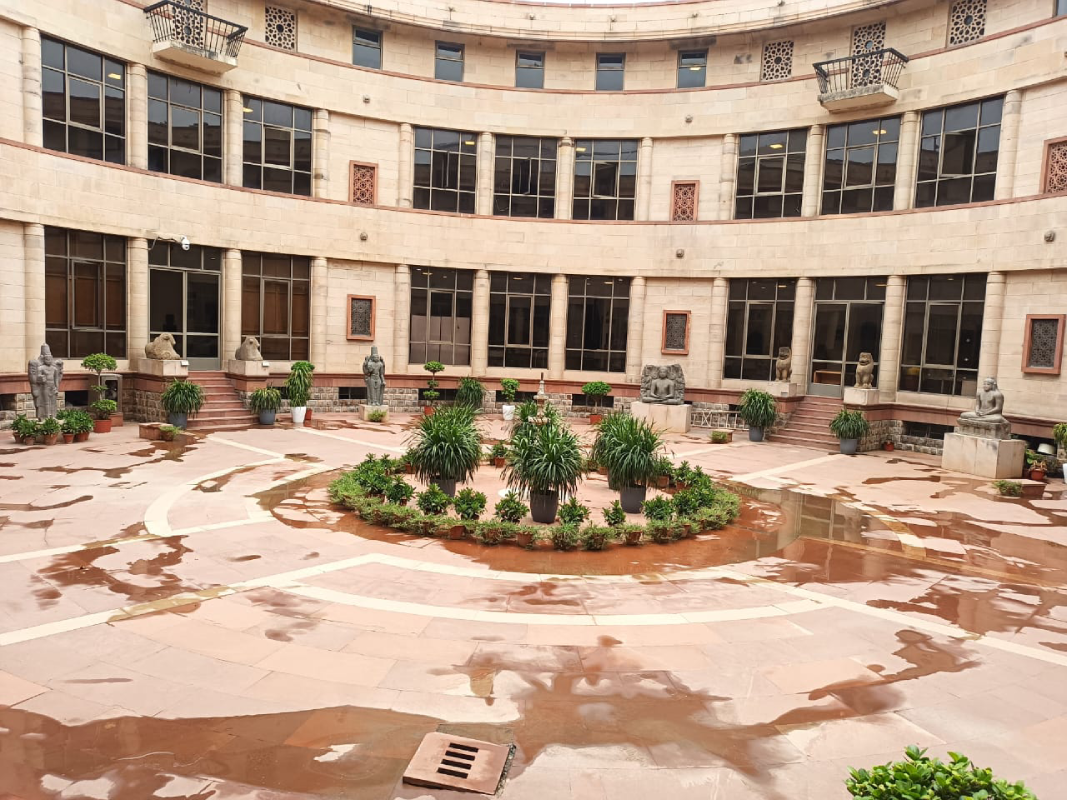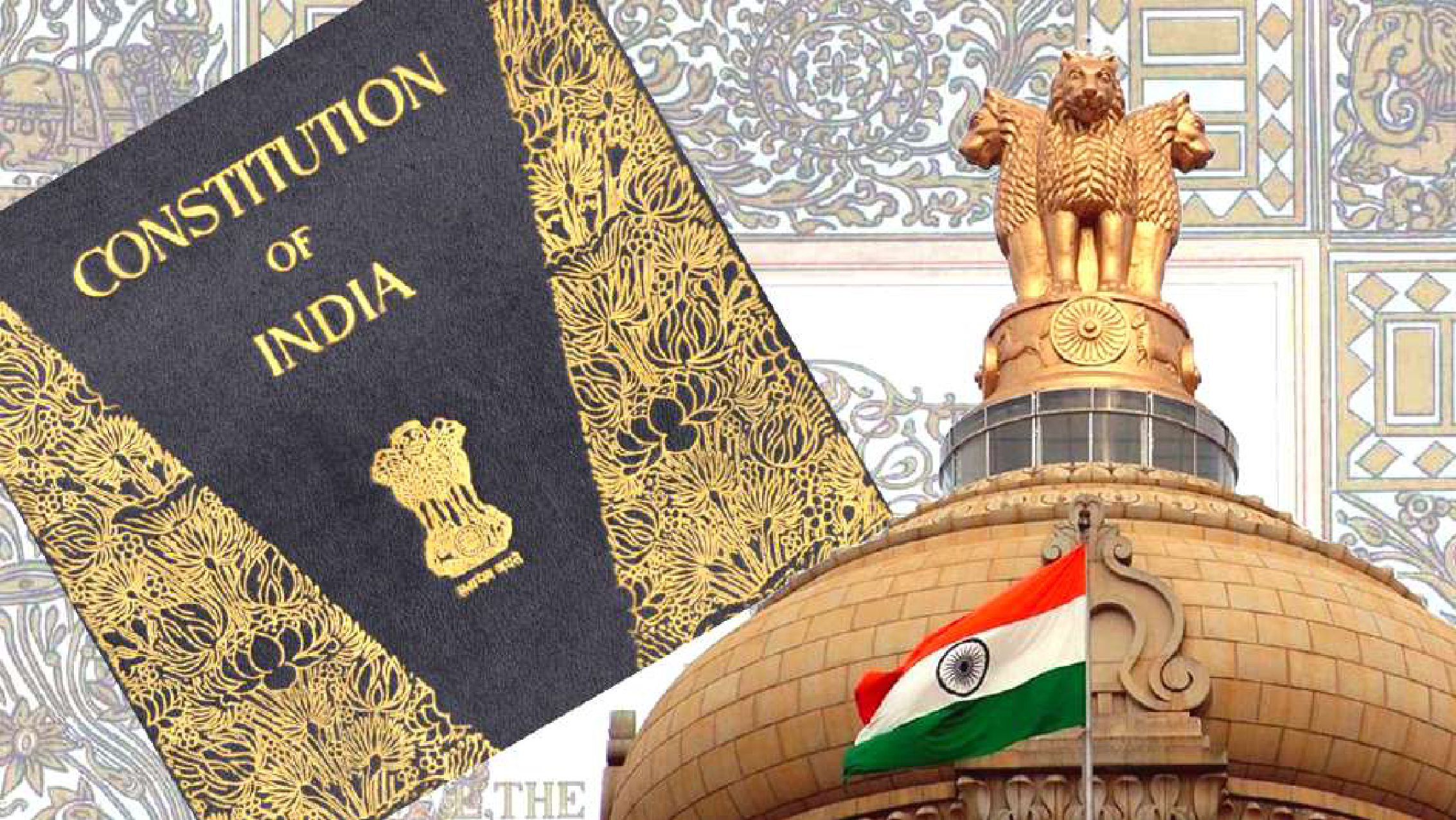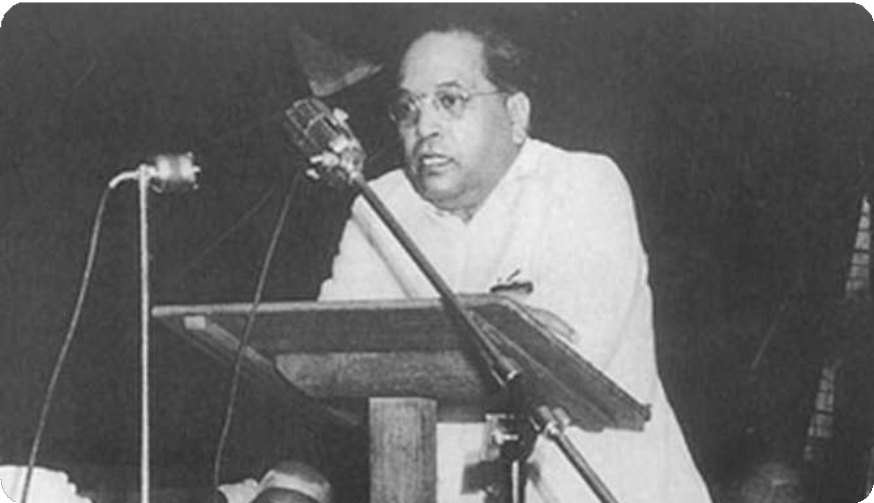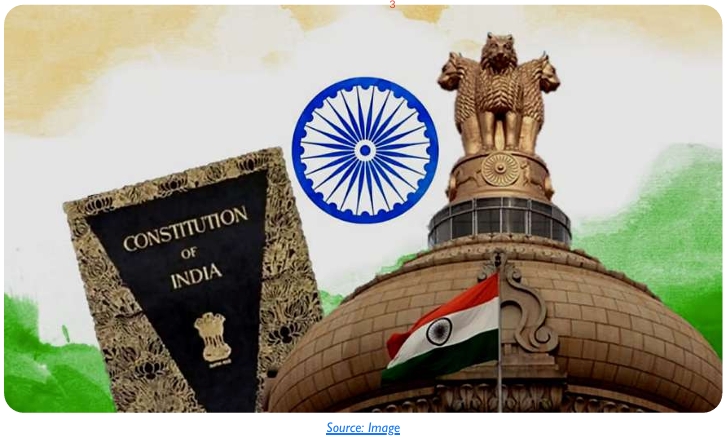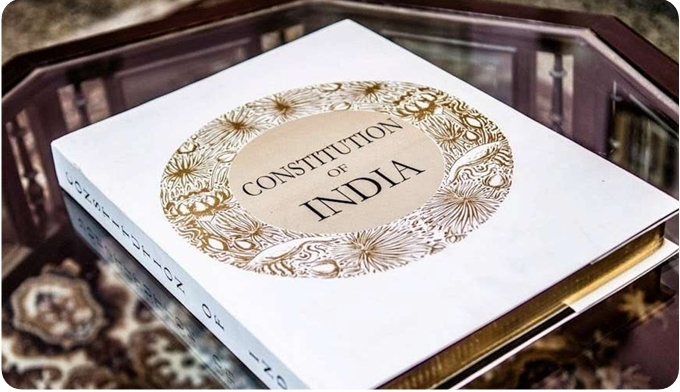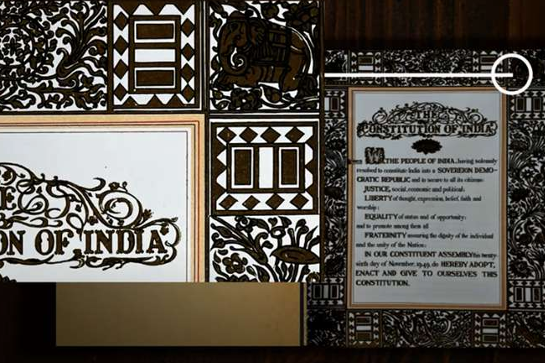Background
The National Food Security Act, 2013 was notified on 10th September, 2013 with the objective to provide food and nutritional security through the human life cycle approach1 , by ensuring access to adequate quantity of food at affordable prices. The Act provides coverage of up to 75% of the rural population and up to 50% of the urban population for receiving subsidized foodgrains under Targeted Public Distribution System (TPDS), thus covering about two-thirds of the population. Besides the entitlement to food grains under the TPDS,
The Act also has a special focus on the nutritional support to women and children. This includes meals to pregnant women and lactating mothers during pregnancy and six months after the child birth. Such women are also entitled to receive maternity benefit of not less than Rs. 6,0002 .
Children up to 14 years of age are entitled to nutritious meals as per the prescribed nutritional standards under the integrated child development services (ICDS) and mid-day meal (MDM) schemes. In case of non-supply of entitled foodgrains or meals, the beneficiaries are supposed to receive a food security allowance. The Act also contains provisions for setting up of grievance redressal mechanism at the District and State levels. Separate provisions have also been made in The Act for ensuring transparency and accountability.
Based on population coverage and the distribution commitment, TPDS forms the largest component of the NFSA. There are two types of TPDS beneficiaries under NFSA – namely Antyodaya (AAY or the poorest-of-poor) and priority – who are entitled to 35 kg/family/ month and to 5 kg/person/month of grain respectively3 . Rice, wheat and coarse cereals are to be distributed at the central issue prices (CIPs) of Rs 3/2/1 per kg respectively. State-wise number of NFSA beneficiaries are determined and communicated to states by the Centre.
The Act is considered the biggest experiment in the world for food-based welfare schemes by any government4 . By ensuring that a majority of the Indian population has access to adequate quantity of food at affordable prices, The Act is seen as a vital instrument to address the persistent problems of food and nutritional security of the country’s population. However, in spite of its ground breaking nature, over the years the many implementation bottlenecks have persisted.
Key Issues
Integrated Child Development Services
- Poor Infrastructure of Anganwadi Centers: The infrastructure of ICDS centers is very poor, which prevents them from delivering essential services. A 2016 study5 of 36 AWCs in the state of Odisha found that more than 85% did not have a designated building for daily The centers also had a severe lack of water, toilet, and electricity facilities, as well as very little play materials. Consequently, there was a lack of faith among about its benefits in the rural community.
- Low Pay for Anganwadi Workers: Anganwadi workers have been fighting for better pay for many They are given a fixed amount as honorarium per month under the scheme, which varies in each state. Many states have seen an increase in the honorarium in recent years following protests. Currently, in Madhya Pradesh the workers and helpers earn Rs 10,000 and Rs 5,000 a month respectively, Karnataka gives Rs 8,000 to the workers and Rs 4,000 to the helpers, Telangana gives its workers and helpers Rs 10,500 and Rs 7,000 respectively and Haryana gives Rs 11,429 to its workers, twice the amount that is given to helpers6 . However, AWWs feel this is inadequate and are demanding 18,000 per month7 .
- Poor Work Conditions: Under the ICDS scheme, anganwadi workers are seen as voluntary social workers and not government employees8 . Consequently, their work not being regularised and deprives them of essential benefits like Provident Fund, pension and ESI (Employees’ State Insurance) cards. Most of the anganwadi workers also complain about being overburdened with other tasks such as BLO (Booth Level Officer) duties, surveys etc9 .
- Inadequate Budget: Under the umbrella Integrated Child Development Services (ICDS) scheme, in 2019-20, the government allotted Rs 23,234 crore which was 2,283 crore more than the budgetary expenditure in FY 2018-19 (Rs 20,951)10 . The latest 2020-21 budget has allocated Rs. 27,057 crore which is a 3.7% increase over the previous year11 . However, the overall share of ICDS has continued to decline as a proportion of total budgetary expenditure since 2014 and remains well under 1%12 .
Mid Day Meal Scheme
- Poor Quality of Food: According to the 2015 CAG report13 , the quality of food served in schools under the Mid Day Meal Scheme was of poor quality across the country. The report highlighted cases of cooking poor quality meals in unhygienic conditions, inadequate and poor quality infrastructure in kitchen sheds etc., which was exposing children to health hazards. According to the report, the prescribed nutrition was not provided in schools of at least nine states, including the national capital. In Delhi, samples of cooked food of the 37 service providers during the period 2010-14 were tested by the Sri Ram Institute of Industrial Research. Out of the 2,102 samples, 1,876 (89 percent) failed to meet the prescribed nutrition standard. The media has also reported several cases of death due to poor quality meals14 . In August 2018 in Jhrakhand an upper primary student had died and more than 60 were hospitalized allegedly after having the school meal. In July 2018, 30 students suffered food poisoning after having the mid-day meal in Delhi. In October 2018, 45 children in Goa were hospitalized after having the mid-day meal.At least, 23 children had died in Bihar in 2013 after consuming contaminated mid-day meal.
- Lack of Monitoring:The scheme has provisions for regular social audit, field visits and inspections but these are rarely carried out15 . Field visit reports not available after FY14 and monitoring institutions’ reports not available after FY15. Studies used to be conducted by institutions such as the IITs and TISS every year in several schools in every district. But, contracts with these institutes not renewed after 2015. The 2015 CAG report16 had also observed that the checks to ensure quality of meals and adequacy of nutritional value remained only on paper. The inadequate monitoring of the scheme by the human resource ministry and the states was a major concern. The funds earmarked for monitoring and evaluation had also been grossly underutilized.
- Caste Discrimination:A 2014 study by the Indian Institute of Dalit Studies (IIDS) in Uttar Pradesh, Bihar, West Bengal, Jharkhand, Odisha, Chhattisgarh and Madhya Pradesh found that Dalit children were being given less food compared to upper caste children17 . In 2015, a Dalit student of a government secondary high school in Jodhpur was beaten for touching plates used to serve midday meals to upper caste children18 . In some schools, Dalit children were asked to bring their own plates from home, were served last and were not allowed to drink from the tap used by upper caste There have also been instances of upper caste teachers and cooks throwing food into the plates of Dalit children from a distance to avoid touching them. In 2013, Parliamentary Committee on the Welfare of Scheduled Castes and Scheduled Tribes released a report, condemning the practice of untouchability under the scheme. Following this, the Union government created task forces to investigate the matter. The MHRD identified 144 poorly performing districts with regards to the practice of untouchability and caste-based discrimination19 .
- Corruption:The 2015 CAG 20 report discovered states having indulged in diversion of funds to the tune of 123.29 crore meant for the Mid Day Meal scheme. The report also highlighted the case of ISKCON in Bellary district Karnataka, which supplied Mid Day meals to children of 304 schools and used 1.04 lakh kg less rice than the prescribed norms in preparing MDM.As per the report under this scheme food supplies are being diverted, supplies are being halved and there is also a lot of wastage.According to a 2019 MHRD report, in the last three years the government has received 52 complaints on corruption in the mid-day meal scheme21 . Amongst the states UP has recorded the maximum number of complaints at 14, followed by Bihar at 7.
- Inadequate Funding: The MDM scheme has been suffering from inadequate funding since 201422 . The share of MDM against total expenditure has come down to 39% (Rs 11,000 crore allotted) in FY2019-20 from 0.63% in FY2014-15. The Budgetary Estimate for 2020-21 remains the same as last year at Rs. 11,000 crore23 .
Maternity Entitlements
1. Exclusions in Pradhan Mantri Matru Vandana Yojana (PMMVY): The PMMVY was announced on December 31, 2016, in accordance with NFSA 2013. The NFSA had made it mandatory for the government to provide Rs 6,000 to every pregnant and lactating mother to ensure nutritional support. But the PMMVY has arbitrarily changed this to Rs. 5000. Even the form of PMMVY has many aspects which are contrary to the spirit of NFSA and results in the exclusion of many pregnant women.
🞍 Exclusion Due to Limitation of Scheme to First Birth:The scheme has been limited only to the first live birth. As per the Sample Registration System (SRS) 2014, 43 per cent of children born every year in India are firstborns. This limitation therefore excludes 57% of cases24 . Also, according to SRS 2015, the fertility rate in rural India is 2.5 and the figure for urban India is 1.8. Therefore, the scheme also excludes more women from rural areas. The National Family Health Survey (NFHS) 2015-16, states that women in the lowest wealth quintile have 1.6 more children than women in the highest quintile. Consequently, the poor also face greater exclusion.
🞍 Exclusion of Under Age Mothers: Only women over 19 years are eligible under this scheme. This is a problem because a large number of women in India have no control over when they get married. According to Census 2011, 30 per cent of women are married before they turn 1825 .These women would be excluded from the scheme if they became pregnant before turning 19.
🞍 Exclusion of Non Institutional Births: The scheme is only applicable to institutional deliveries. As per NFHS 2015-16 data, 80 per cent deliveries in the country do not take place in hospitals26 . These women, who do not come to hospitals, do so for monetary reasons. But the scheme excludes such women who are most in need of monetary help.
2.Payment Not Received and Payment Delays: A June 2019 survey in Jharkhand revealed that 76% of eligible women had not received any benefit under the PMMVY27 . Further, only around 20% had received just the 1st installment of 1000. The scheme also suffers from frequent payment delays, and due to the centralised payment architecture the local functionaries are unable to understand the reasons for delay28 .The non-payment of benefits and frequent delays is resulting in a disincentive to register future beneficiaries and furthering exclusion.
3. Inadequate Budget: In December 2018, experts had written to the then Finance Minister Arun Jaitley, suggesting a figure of Rs. 8000 crore for PMMVY to ensure the right to maternity benefits of all women defined as per the NFSA29 . This estimate was based on the crude birth rate of 19 per thousand and the 60:40 PMMVY fund share ratio between the Central and state government. However, the 2019-20 budget allocated only Rs 2,500 crore for the PMMVY. This is an increase over the previous year but remains inadequate. In 2018-19 the budgetary estimate for PMMVY was Rs. 2400 crore, but this was revised downwards to Rs. 1200 crore due to underutilization.
Targeted Public Distribution System
- Leakages in TPDS: Leakages continue to impact the system As per 2004-05 data leakages at all India level was at 55%30.This came down by 2007-08 to 44% and in 2011 it was at 46.7%31 . The 2015 CAG report had noted both inclusion and exclusion errors in the beneficiary list32 .Targeting has not resulted in reduction of leakages and some have suggested that it has become worse33 . The dual pricing through TPDS has created an incentive to divert grains to the open market.
- Problems in Targeting: Under targeted PDS BPL and APL households were BPL households were identified via household income, but households with any assets (such as televisions, fans, two or four wheeled vehicles, or land) were considered APL. These APL households despite having ownership of assets were food insecure, and the removal of rations added to their insecurity34 . The problem of targeting is also compounded by the lack of reliable data. There are no official estimates of the actual income of households and many BPL households are excluded from BPL cards35 . Targeting has also exacerbated the existence of illegal cards36 . In 2015 the CAG noted that many states had not completed the process of identifying beneficiaries, and 49% of the beneficiaries were yet to be identified37 . In February 2017, under NFSA, the use of Aadhar as proof of identification became mandatory. The goal was to remove bogus ration cards, check leakages and ensure better delivery of food grains. As of January 2017, 100% ration cards had been digitized and the seeding of cards with Aadhaar was at 73%38 .
- Problems in One Nation One Ration: The ONOR scheme aims to enable portability of ration cards by linking it with But linking Aadhaar with the ration cards has previously run into many problems39 .There have been instances of people being denied food due to absence of Aadhaar card or malfunctioning of the Biometric authentic system. Experts argue the same could happen with the new scheme.The pilot for ONOR was started in Odisha on 1st September 2019 for its intrastate migrants. But out of 32 million beneficiaries, 1.8 million (6%) could not get their Aadhaar linked with their ration card before the deadline of September 1540 .A survey conducted in October 2019 in Odisha found that 35% of households did not have Aadhaar-seeded ration cards. Further, up to 12.42% individuals did not have an Aadhaar number while 19% submitted it but could not get it linked to their ration card. Similarly in Gujrat tribal communities have reported not being able to get ration due to poor internet connectivity in their villages. Another concern is that the seasonal migrants are not tracked. The 2011 Census shows that the exact number of migrant workers within India is not easy to measure, especially at state level. This makes it a challenging task to reach a majority of beneficiaries in the country. The availability of Electronic PoS machines in the ration shops is also crucial. But data shows by February 2019, only 72% of fair price shops across the country had installed electronic PoS machines41 . Bihar, which has the second highest immigrants after UP, had the least number of devices installed.
- Inadequate Storage Capacity: The total storage capacity in India by 2017 was 788 lakh 354 tones capacity was with the Food Corporation of India and 424 lakh tonnes was with state agencies42 . The 2015 CAG report found that the available storage capacity in states was inadequate for the allocated quantity of food grains43 . It highlighted the example of Maharashtra where of the 233 godowns sanctioned for construction, only 93 had been completed as of 2015. The report also observed that in between 2010-15 for 4 years the stock of food grains with the Centre was higher than the storage capacity with the Food Corporation of India.
- Poor Quality Food Grains: A 2011 survey observed that the quality of food grains received under PDS was of poor quality and adulterated, and had to be mixed with other grains to make it edible44 . Poor quality of grains can not only have an adverse health affect but can also lead to reluctance to buy food from fair price While State Food Safety Officers undertake regular surveillance, monitoring, inspection and random sampling of all food items, separate data for food grains provided through PDS is unavailable45 . The absence of data makes it difficult to ascertain whether the quality meets the prescribed standard.
The NFSA During the Covid-19 Crisis
The arrival of the Covid-19 virus has triggered not just a health crisis in India but also a social one. As a response to the Covid emergency the government of India announced the largest lockdown in history, with 1.3 Billion people ordered to stay inside starting 25th march. While the lockdown was integral to ensure the slowing down of the disease progression, implementing a lockdown in a country such as India has had a disproportionate impact on the poor and has brought to the forefront the deep class divide present in the country. An inadequate safety net has left many from economically weaker sections without food security and access to basic services. Many media reports have shown how migrant workers in cities have found themselves without a daily wage, street food suppliers and even a home, since they could no longer pay rent, and this has led to a large scale reverse migration46 , with desperate migrants leaving cities amid lockdown and walking hundreds of miles towards their home villages.
The biggest concern during the crisis has been in ensuring food security particularly for the vulnerable sections. With this in mind the government on the 26th of march announced a 1.7 lakh crore relief package with a major food component, and the PDS is supposed to be playing a key role in disbursing government support47 . However, according to a recent government survey despite the government making efforts to reach people with relief and supplies, access has not been universal and only 31 percent have reported receiving relief in either cash or kind48 The covid crisis has brought to the fore the many gaps within the system and implementing food security has been a huge challenge. Some of the major challenges:
- Inadequate Relief Package: The Pradhan Mantri Garib Kalyan Yojana was announced by the government on 26 March. The package was for Rs 1.7 lakh crore and included an itinerary of However, as per a number of experts the package in itself lacked the reach to address the needs of the most vulnerable sections.
- Exclusion from the PDS: According to a study by Jean Dreze, Reetika Khera and Meghana Mungikar due to use of outdated 2011 census data to calculate state wise PDS coverage currently around 100 million people have been excluded from receiving rations from the PDS49 . Under the NFSA, the PDS is supposed to cover 75% of the population in rural areas and 50% of the population in urban areas, which works out to 67% of the total population, using the rural-urban population ratio in 2011. India’s population was about 1.21 Billion in 2011 and so PDS covered approximately 800 million However, applying the 67% ratio to a projected population of 1.37 Billion for 2020, PDS coverage today should be around 920 million50 . Even taking into account growing urbanisation, the shortfall would be around 100 million. The estimates are based on 2016 state-wise estimates of birth and death rates.
- Non Portability of Ration Cards: Currently, PDS ration cards are neither portable across locations nor can rations be divided, allowing family members to pick up portions at different locations, making them potentially useless for seasonal migrant laborers51 .The One Nation One Ration scheme launched last year has also run into a number of problems as noted earlier.And even if the ONOR programme is implemented, it has no provision for divisibility. This has raised serious concerns for last mile delivery of ration especially for seasonal migrants.
- Impact on Supply Chain and Price Rise: The effect of the lockdown hit the agricultural sector A lack of transport, market shutdowns, labour shortages, strict action by police on transport and the stringent imposition of lockdown by local authorities put enormous strain on India’s food supply.
- Insufficient Agricultural Budget: One of the most critical challenges that the current coronavirus pandemic has highlighted is the ability of the agricultural sector to effectively cope with crisis However, this is also one sector that has been the most ignored for policymakers.The budget allocation of 2020-21, the Ministry of Agriculture and Farmer’s Welfare was allocated Rs 1,42,762 crore which accounted for a mere 5 percent of the total budget52 . While the percentage of allocation to agriculture has steadily increased over the years in relative terms, it has not exceeded the 5 percent mark in the last decade. A token allotment of 4-5 percent of expenditure for a sector which contributes around 16 percent to the country’s GDP is bound to face critical challenges that directly impact millions during the current crisis.
Recommendations
- Emphasis should be given to strengthen basic infrastructure of Anganwadi Centres and to improve their overall ambience to ensure optimal utilization of services by beneficiaries.
- Ensuring job satisfaction by regularizing employment and increasing honorarium of AWWs is necessary to ensure higher quality of service delivery.
- Regular and stringent monitoring of ICDS needs to be ensured.
- Adequate funding for ICDS and proper utilization of funds needs to be There needs to be a road map for meeting the funding requirements.
- Need for stringent monitoring of quality of food provided during mid day meals by SMC. The responsibility of cooking, cleaning utensils etc. needs to be given to local women’s groups and self help groups, school should play a supervisory role.
- Independent social audits need to be regularized. There needs to be proper utilization of monitoring and evaluation funds.
- The Scheduled Castes and Scheduled Tribes (Prevention of Atrocities) Act, 1989 needs to be amended to include new forms of discrimination within the Mid Day Meal Scheme.
- It is imperative that the teachers and serving staff be sensitised to the ill-effects of caste discrimination on children as well as the society. Building more schools in Dalit dominated regions and employing more Dalit cooks and servers can also help this objective.
- Need for stringent action against any case of corruption in the Mid Day Meal scheme.
- Adequate funding for MDM scheme needs to be ensured at the earliest.
- The PMMVY scheme needs to be universalized to ensure all cases of pregnancies are covered.
- Cash entitlement under PMMVY should be revised to 6000. Timely payment to all beneficiaries needs to be ensured.
- Funding for PMMVY needs to increase and there needs to be a roadmap to meet the funding requirement as given by experts.
- Better use of Information Technology right from the time of purchase of food grains till its distribution will help minimize leakages.There should be seamless flow of information online between the FCI and State.The exact information about how much food grain has been procured from which mandi, which warehouse it is stored in and for how long and when it has been released for distribution needs to be available.
- Targeting has led to inclusion and exclusion Dual pricing has also contributed to leakages. In the long run we need a road map to move to a universal PDS with self exclusion.
- Storage capacity of states needs to be All sanctioned godwns need to be constructed at the earliest.
- Information about quality of food grains at time of purchase, storage conditions in warehouse, when it is given to PDS shops and when the shops have distributed it to the beneficiaries etc. should be made available. Need regular quality monitoring of food grains.
- There is a need for a proper study of migration patterns across the country. Information on the inflow and outflow of migrants is vital for the allocation of the ration cards under ONOR.
- Aadhar seeding of ration cards should happen as soon as Poor internet connectivity is a larger infrastructure issue that needs to be resolved.
- All ration shops need to install ePOS machines at the earliest.
References
- Ambast, Shruti and Pant, Happy.2020.While Malnutrition Rages, Nutrition-Related Schemes Get 19% Less Funding. New Delhi: Centre for Budget and Governance Accountability.
- Basole, Amit. 2018. State of Working India 2018. Bengaluru: Centre for Sustainable Employment, Azim Premji University.
- CAG.2015. Performance Audit of Mid Day Meal Scheme (2009-10 to 2013-14): Report No. 36 of 2015. New Delhi: Controller and Auditor General of India.
- —-. Audit on the Preparedness for Implementation of National Food Security Act, 2013 for the year ended March 2015: Report No. 54 of 2015. New Delhi: Controller and Auditor General of India.
- Chaudhary, Manira. September 10, 2018. ‘Taken for Granted and Ignored, Anganwadi Workers Demand Better Pay, Conditions,’ The Wire. Delhi:The Wire.
- Deogharia, Jaideep. September 4, 2019.‘CGovernment violates NFSA, thousands of women deprived of maternity benefits; reveals survey,’ Times of India. Ranchi:Times of India.
- Dutta, Anisha and Haq,Zia. April 10, 2020. ‘Covid-19 in India: Food prices surge 3 times as supply chain takes a hit,’ Hindustan Times. New Delhi: Hindustan Times.
- FE.Online. March 27, 2020. ‘Nirmala Sitharaman Highlights: Rs 1.7 lakh cr economic relief package to give cash, free food to survive coronavirus,’ Financial Express.
- Ghosh, Jayati, Patnaik, Prabhat and Mander, Harsh. April 27, 2020. ‘Covid-19 crisis calls for universal delivery of food and cash transfers by the state,’ The Indian Express. New Delhi: The Indian Express.
- Government of India 2013. National Food Security Act.
- Gunjan, Raunak Kumar. April 15, 2020. ‘Impatient, Starving, Angry: As India Extends Lockdown, Stranded Migrant Workers Emerge as Crisis in Making,’ News18.
- Haq,Zia. March 30, 2020. ‘E-PDS could have helped migrants, but scheme still lacks the scale,’ Hindustan Times. New Delhi: Hindustan Times.
- Jha, Praneta, February 1, 2020. ‘Budget Fails Indian Children Yet Again,’ Newsclick.
- Khera, Reetika. November, 2011. ‘Revival of the Public Distribution System: Evidence and Explanations,’ Economic and Political Weekly, Vol. 46, No. 44-45. Mumbai: Economic and Political Weekly.
- MoCAFPD 2015. Standing Committee on Food, Consumer Affairs and Public Distribution (2014-15): Demand for Grants (2015-16) Third Report. New Delhi: Ministry of Consumer Affairs, Food and Public Distribution, Government of India.
- Nanda, Prashant K. September 10, 2019. ‘Govt set to review mid-day meal scheme amid row over food quality,’ livemint.
- Pandey,Kundan. September 27, 2018.‘Mothers of 57% newborns not entitled to maternity benefits,’ DownToEarth.
- PIB. March 26, 2020. SFinance Minister announces Rs 1.70 Lakh Crore relief package under Pradhan Mantri Garib Kalyan Yojana for the poor to help them fight the battle against Corona Virus. New Delhi: Press Information Bureau, Government of India.
- PRS. October 2017. ‘Food Security in India’, New Delhi: PRS Legislative Research.
- Rupawat,Prudhviraj. July 9, 2019.‘Budget 2019-20: Govt Schemes for the Poor Neglected Again,’ Newsclick.
- Sen, Amartya, Rajan, Raghuram and Banerjee, Abhijit. April 17, 2020. ‘Huge numbers may be pushed into dire poverty or starvation…we need to secure them,’ The Indian Express. New Delhi:The Indian Express.
- Special Correspondent April 15, 2020. ‘Outdated census data deprives over 10 crore of PDS: economists,’ The Hindu. Delhi:The Hindu.
- SWAN.April 15, 2020. 21 Days and Counting: Covid-19 Lockdown, Migrant Workers, and the Inadequacy of Welfare Measures in India. Stranded Workers Action Network.
- Tandon, Aditi. April 26, 2020. ‘Food-insecure Indians eating less, skipping meal: Govt study,’ Tribune News Service. New Delhi:The Tribune.
- Tiwari, Suyash.February 2020. ‘Demands foor Grants 2020-21 Analysis: Agriculture and Farmers’ Welfare’, New Delhi: PRS Legislative Research.
Footnotes:
1 NFSA 2013
2,3 Ibid
4 https://www.zef.de/fileadmin/webfiles/downloads/projects/volatility/downloads/Chap_13_Gulati_Saini_National_Food_Security_Act 2_.pdf
5 https://www.ncbi.nlm.nih.gov/pmc/articles/PMC5296463/
6 https://thewire.in/labour/anganwadi-icds-child-development-ministry
7 https://www.business-standard.com/article/pti-stories/federation-of-anganwadi- workers-and-helpers-demands-monthly-wage-of-rs-18000-118091101061_1.html
8 https://thewire.in/labour/anganwadi-icds-child-development-ministry
9 ibid
10 https://www.newsclick.in/budget-2019-20-govt-schemes-poor-neglected-again
11 http://www.cbgaindia.org/blog/malnutrition-rages-nutrition-related-schemes-get- 19-less-funding/
12 https://www.newsclick.in/budget-2019-20-govt-schemes-poor-neglected-again
13 https://cag.gov.in/sites/default/files/audit_report_files/Union_Performance_Civil_ Mid_Day_Meal_Report_36_2015_2.pdf
14 https://www.livemint.com/politics/policy/govt-set-to-review-mid-day-meal-scheme-amid-row- over-food-quality-1568055948575.html
15 https://economictimes.indiatimes.com/news/politics-and-nation/whats-ailing-indias-midday- meal-scheme/articleshow/72918265.cms
16 https://cag.gov.in/sites/default/files/audit_report_files/Union_Performance_Civil_Mid_Day_ Meal_Report_36_2015_2.pdf
17 https://www.downtoearth.org.in/news/governance/how-caste-is-marring-mid-day-meals-60898
18, ibid
19 ibid
20 https://cag.gov.in/sites/default/files/audit_report_files/Union_Performance_Civil_Mid_Day_ Meal_Report_36_2015_2.pdf
21 https://www.news18.com/news/india/the-dal-roti-way-hrd-ministry-confirms-up-has-highest- number-of-corruption-cases-in-midday-meal-scheme-2399811.html
22 https://www.newsclick.in/budget-2019-20-govt-schemes-poor-neglected-again
23 https://www.newsclick.in/Budget-Fails-Indian-Children-Again
25,26 ibid
27 https://timesofindia.indiatimes.com/india/government-violates-nfsa-thousands-of-women-deprived-of-maternity-benefits-reveals-survey/articleshow/70982184.cms
28 https://thewire.in/women/pmmvy-maternity-benefits-budget-allcoation
29, 34, 35, 36, 38, 40 ibid
30 https://www.ncbi.nlm.nih.gov/pmc/articles/PMC6747310/
32 https://cag.gov.in/sites/default/files/audit_report_files/Union_Civil_National_Food_Security_Report_54_of_2015.pdf
33 https://www.ncbi.nlm.nih.gov/pmc/articles/PMC6747310/
37 https://www.prsindia.org/theprsblog/food-security-india
39 https://thenewleam.com/2019/11/one-nation-one-ration-programme-faces-many-challenges-experts/
41 ibid
42 https://www.prsindia.org/theprsblog/food-security-india
43 https://cag.gov.in/sites/default/files/audit_report_files/Union_Civil_National_Food_Security_Report_54_of_2015.pdf
44 Revival of the Public Distribution System: Evidence and Explanations,The Economic and Political Weekly, November 5, 2011
45 http://164.100.47.190/loksabhaquestions/annex/10/AU2124.pdf


